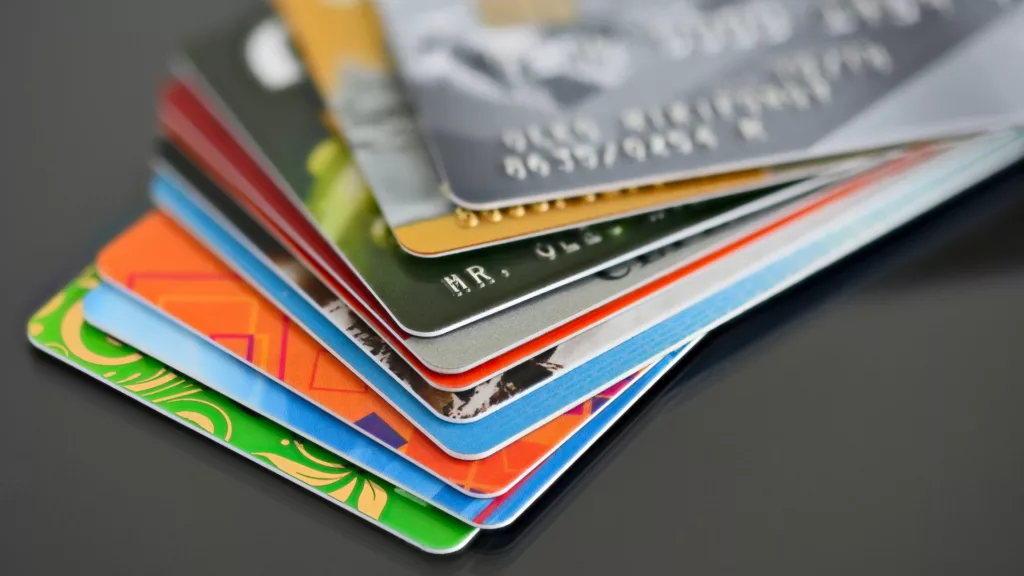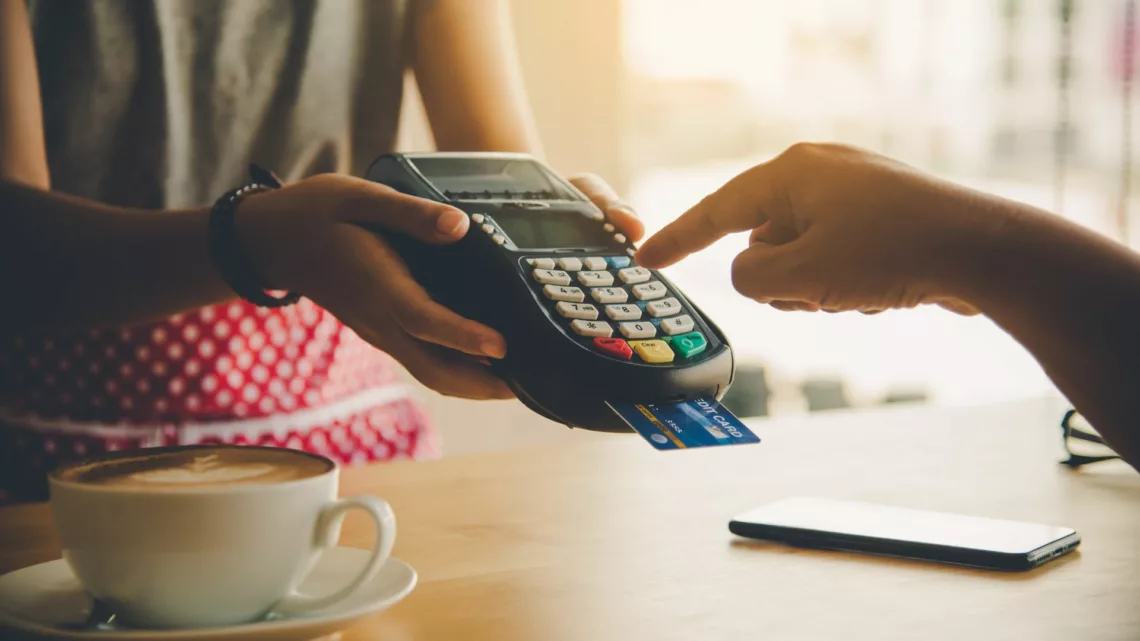When you’re in Europe and the cashier or payment terminal asks, “EUR or USD?”, it might seem helpful to see the price in your home currency. However, this question is essentially asking if you’d like to pay extra for the convenience of viewing the charge in dollars. Quick answer: If you have a credit card with no international transaction fees, it’s generally better to pay in Euros. If your card does charge such fees, the choice becomes less significant. Keep reading for more details.
The Currency Dilemma

So what is really going on here? Someone is hoping to skim a little money off the top of your purchase by charging a dynamic currency conversion fee (DCC). They are offering to convert the transaction to your currency for you, and they have built in a convenience fee for this service into the price you see. It probably isn’t a good deal for you. I always choose to pay in the local currency. This means I select EUR (euros), CHF (Swiss francs), or GBP (British pound sterling). Or whatever the local currency is. But never, ever, do I choose to pay in USD (dollars) when I am outside the United States. I use credit cards with no international transaction fee. This means the question of USD or EUR is really asking me whether I want to opt in to pay an extra fee for this transaction. Selecting USD means yes, selecting EUR (or other local currency) means no.
Free ways to calculate what it's going to cost you in dollars
Before traveling, I check exchange rates using XE to have a general idea of costs in my currency. The free XE App allows on-the-go rate checks and price calculations. If you’re dealing with multiple currencies during your trip, the app lets you track all of them on one screen.
For instance, if you’re eyeing a €24 shirt, you can check its cost in the app before reaching the register. Prices in Europe include taxes, so the shelf price is what you pay. At the time of writing, the XE App indicates that a €24 shirt would cost approximately $26.28 USD. The Visa Exchange Rate Calculator and the Mastercard Exchange Rate Calculator both estimate it at $26.33 USD. The slight difference (5 cents) is likely due to Visa and Mastercard adding a nominal markup over the European Central Bank rate. The XE App’s estimate is close enough for me. Note that these conversions exclude international transaction fees; if your card imposes one, you’ll need to add that to the Visa and Mastercard calculators.
Use a credit or debit card with no international transaction fee
You have probably picked up on this by now, but in order to not pay more than you need to for a foreign transaction you need to use a credit or debit card with NO international transaction fee. When your card does not charge an international fee (usually 2-3%), you are simply paying the market rate determined by Visa, Mastercard, or whoever’s network your card runs over. They offer you the best market rates because you are piggy-backing off the competitive rates they get because of their size and volume. So make sure you travel with a credit card, or a couple of credit cards, that have no international transaction fee. Usually credit cards marketed for travel or offering travel benefits do not charge an international transaction fee (so it actually appeals to travelers). And this saves you money. For example, if you pay $4000 total in lodging, food and spending on your trip, a 3% international transaction fee is going to tack on another $120 to your bill.
Also be sure to check with your bank about your debit card. While I don’t recommend using your debit card for purchases abroad, I do recommend bringing one just in case you need to withdraw some cash. And I don’t want to pay an international transaction fee on my cash withdrawals oversees either.
Selecting currency at an ATM

Last year, in Greece, Gary hurried to withdraw some Euros as soon as we arrived in Athens. Before I could stop him, he used a touristy ATM to complete the transaction. He chose to complete the transaction in USD. As soon as I got wind of what he was doing over there, I knew it was going to be bad news. Sure enough, he paid approximately 10% in a mark-up fee for his Euros! He realized his mistake almost immediately since the markup was so high. We will blame it on jetlag; as it is a rookie mistake.
Taking out cash oversees at an ATM can be a smart move. As long as you aren’t paying an international transaction fee, you are going to get the most favorable exchange rate at the ATM machine if you select the local currency.
I highly recommend using an ATM machine associated with a local national bank rather than a random ATM machine that has popped up in a touristy area. Basically, my personal rule is to use an ATM a local would use. If you aren’t sure what the bank names are in the country you are visiting, google it before you go. It’s a good thing to know.
Expect to pay a flat transaction fee, like you would with any ATM machine. In my case, I have found the ATM fee to be comparable or less than the cost to ship foreign currency from my bank to my house before I leave (and the ATM exchange rate is much better).
So why would anyone choose to pay in dollars?
Now, if you are traveling with a card that charges an international transaction fee, the choice becomes less straightforward. This is because you will be paying a fee either way—whether you choose dollars or euros. You are simply deciding whether to pay the international transaction fee or the dynamic currency conversion (DCC) fee. Ideally, you would select the option that costs you less.
In this case, if you choose dollars (USD), you will pay the amount displayed, and that is what will post to your card statement. If you choose euros, your credit or debit card issuer will convert the amount for you at a favorable exchange rate but will add the international transaction fee. The amount of these fees can vary (3% is common), making it difficult to provide a general answer on which option is better.
You can use the Visa or Mastercard calculator to estimate the cost if you select euros—just be sure to add your card’s foreign transaction fee to the calculation. This will help you determine which option, dollars or euros, is less expensive in your case.
Credit cards with no international transaction fees

So, what’s in our wallets when we travel? We bring some euros in cash for the occasional bathroom fee or that one restaurant on every trip that doesn’t accept cards. But for the most part, we rely on our credit cards.
For the past few years, my favorite has been the Chase Aeroplan card. I always use it to pay for our plane tickets because it includes free trip cancellation and interruption insurance, lost luggage insurance, trip delay insurance, and more. I also use it for car rentals since it provides primary car rental coverage when traveling overseas (which is fantastic). Plus, it offers purchase protection for 120 days, so if I’m buying something for a trip, I use this card in case the item is lost or stolen.
And, of course, it always comes with me because it has no international transaction fees! This card was designed for travelers, and it’s hands down my favorite. That said, I also bring a few extra cards as backups—though I rarely need them.
Chances are, you already have a card with no international transaction fee. That’s the one you want in your wallet when you travel!
Teaching my kids how to pay in Europe
A couple of years ago, I discovered Greenlight debit cards for kids and signed up to use them for paying our kids’ allowances. Since then, this card has been great for other things too—especially travel.
We used to deal with constant requests from the kids to buy things at every stop, every single day of a trip. Now, we give them a trip budget that they manage themselves, so they can decide what they really want to spend their money on. We load a set amount onto each of their cards, and the Greenlight app makes it super easy to track. The kids can see their balances and transactions in real time, and so can we. Plus, there’s no international transaction fee!
We do pay $10 per month for our family’s account, but for us, it’s worth it (and there’s a cheaper plan available). We also love that our plan includes cell phone insurance for each of our kids.
If you’re looking for a debit card designed for kids and teens—one where you can send them money, assign chores, and even teach them to save and invest—I’d be thrilled if you use my link to sign up (plus, you’ll get $30 if you do!).
Yesterday, I asked my youngest whether she should pay in USD or EUR in Europe, and she immediately said euros! They learn young.







One comment on “Should I Pay in Dollars or Euros? (Money-Saving Tips for Europe)”